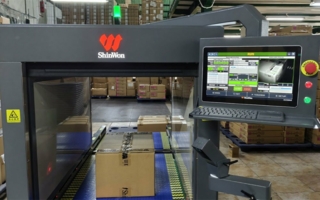23/11/2020 – Transparency within the supply chain — auf Deutsch lesen
13th Hermes Barometer: The use of digital technologies has increased significantly
Communication problems and security concerns are delaying companies’ efforts to implement a transparent supply chain.
For every other company, the necessity of a transparent supply chain has increased in recent months. However, despite the constantly growing use of technology, numerous obstacles such as communication problems and security concerns are delaying companies' efforts to implement a transparent supply chain. This is the result of the 13th Hermes Barometer “Transparency in the Supply Chain”, a survey conducted by Hermes Germany among 200 logistics decision-makers in German companies.
- Against the background of the corona pandemic and a growing economic uncertainty, the information requirements for supply chains have increased significantly: 47 percent of survey participants stated that a transparent supply chain has become much more important as a result of the pandemic. In addition, a quarter of those surveyed agreed with the statement that the complexity within their own supply chain is growing and that risks throughout the entire production and sales process can hardly be controlled.
Obstacles on the way to a transparent supply chain
Similar to the 2017 survey results, communication problems between the partners involved and the lack of networking with suppliers and trading partners will continue to be the main obstacles to implementing a transparent supply chain in 2020. Security concerns and a lack of trust prevent 46 percent and 43 percent of study respondents from sharing data with their partners – the basis for improved communication and increased transparency within a supply chain.
Moritz Gborglah, Division Manager International Freight at Hermes International, a division of Hermes Germany:
“The use of shared SCM software that allows access authorizations to be defined and data to be shared securely could be a beneficial solution for all parties involved.”
In addition, a lack of human resources is a relevant obstacle to more intensive cooperation, especially for one in two smaller companies with fewer than 250 employees (53 percent). “Smaller companies in particular find it difficult to retain know-how in the company in the long term,” says Gborglah.
Further, the high expenditure of time and money for the implementation of necessary technologies continues to hinder the transformation.
Technology usage is increasing
However, the use of technology is highly relevant to supply chain planning for global supply chains:
- 75 percent of decision-makers agreed with the statement that digital technologies are crucial for having a resilient supply chain in the event of future crises.
- This view is also reflected in the use of technology which has increased significantly compared to 2017.
- The use of dashboards (+ 17 percent), portals and platforms (+ 16 percent) and cloud solutions (+ 13 percent) showed particularly strong growth.
Innovative technologies such as blockchain or artificial intelligence (AI) are currently used by 10 percent of the companies surveyed. This development clearly shows that only technologies that have already been tried and tested are being used across the board. “For the application of innovative technologies, more best-practice examples are needed which companies can use as a guide,” says Gborglah. Hermes International, for example, has had succesful experiences with the use of Big Data, which can now be passed on to customers.
One in three supply chains is transparent
Around half of the survey participants believe that their companies are well positioned and also prepared for major disruptions. Thus, 55 percent denied the statement that as a result of the pandemic, previously unseen weaknesses in the supply chain were uncovered. “Awareness of their own processes and limitations seems to have grown,” comments Gborglah, emphasizing the importance of companies recognizing the critical role their own supply chain plays in the context of the overall corporate performance.
- The growing awareness may also be related to the increased transparency within German supply chains.
- According to the survey, 32 percent of the companies polled currently possess a digital real-time supply chain in order to identify potential risk factors. In 2017, this figure was only 20 percent.
“This development is definitely a positive one,” says Gborglah. “But it also shows that almost 70 percent of companies still need to take this path in order to remain successful in the market in the long term.”
Logistics experts such as Hermes Germany support companies in identifying and exploiting optimization potential along the supply chain. Within the framework of a holistic analysis, existing processes are examined and recommendations for action or concrete measures are made to increase efficiency and improve sustainability within the supply chain.
About the survey
Participants: 200 logistics decision-makers
Method: Telephone survey
Survey period: September 2020





